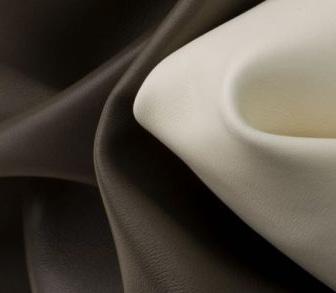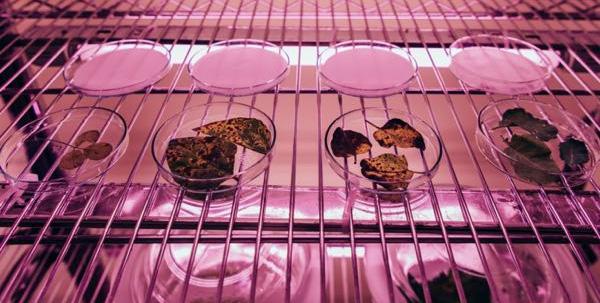Positive changes in a committed sector
FASHION & LEATHER #4

FASHION & LEATHER
Positive changes in a committed sector
1. SMART KEYS
• New generation tanning – towards a leather industry with a reduced chemical impact?

Positive changes in a committed sector

Positive changes in a committed sector
1. SMART KEYS
• New generation tanning – towards a leather industry with a reduced chemical impact?
• What are the fundamentals of animal welfare?
• Environmental management: catalyzing the leather industry's shift to sustainability
2. LEATHER IRL
• Six leather popular beliefs examined in detail
3. INTERVIEW
• Olivier Raynaud, Raynaud Jeune
• Anne-Christin Bansleben, Deepmello
4. PODCAST Smart Creation, the podcast.
• Chiara Mastrotto, President & Director Gruppo Mastrotto
5. PV PARIS TALKS
• Innovative tanning – mastering sustainable chemistry
• Driving transformational change in the leather industry
Leather is an age-old material, used in everything from clothing to footwear, leather goods, automobiles and saddlery. Leathers born from the know-how of the tanners will be with us for the long term, thanks to their durability, comfort and matchless aesthetic qualities.
Leather development is a deft balance of science, technology and craftmanship, and altering just one of these factors can impact both the process and the result.
So how do we harmonize these parameters while charting an ecoresponsible course? Discover the industry's initiatives and developments in this new white paper dedicated to leather.
Positive changes in a committed sector
1 2 3 4 5
SMART KEYS
• New generation tanning – towards a leather industry with a reduced chemical impact?
• What are the fundamentals of animal welfare?
• Environmental management: catalyzing the leather industry's shift to sustainability.
• Six leather popular beliefs examined in detail, in collaboration with Le Conseil National du Cuir.
• Olivier Raynaud, CEO Raynaud Jeune.
• Dr. Anne-Christin Bansleben, Founder & Managing Director Deepmello.
Smart Creation, the podcast.
• Chiara Mastrotto, President & CEO Gruppo Mastrotto.
PVP PARIS JULY 22 TALKS
• Innovative Tanning – Mastering sustainable chemistry.
• Driving transformational change in the leather industry
Positive changes in a committed sector
1. SMART KEYS
• New generation tanning – towards a leather industry with a reduced chemical impact?
• What are the fundamentals of animal welfare?
• Environmental management: catalyzing the leather industry's shift to sustainability

2. LEATHER IRL L
• Six leather popular beliefs examined in detail
3. INTERVIEW
• Olivier Raynaud, Raynaud Jeune
• Anne-Christin Bansleben, Deepmello
4. PODCAST Smart Creation, the podcast.
• Chiara Mastrotto, President & Director Gruppo Mastrotto
5. PV PARIS TALKS
• Innovative tanning – mastering sustainable chemistry
• Driving transformational change in the leather industry
New generation tanning – towards a leather industry with a reduced chemical impact?
What material wins the prize for the stormiest debate? Leather would probably be the gold medalist for the lively arguments it generates. While traceability, no risk of deforestation and animal welfare are the key links in a virtual supply chain, the stages after the sourcing of skins are just as crucial.
From the wet work to the finishing, there are many steps, all of which require water, energy, chemical inputs and which generate waste.
A technique refined during the 20th century, chrome tanning was attractive because the leather it produced was soft, resistant, available in a wide range of colors and suitable for many different products. In addition, it was a speedy process, requiring just 24 hours to tan a skin.
This success catapulted it into pole position in the list of the most widelyused tannins, scooping up more than 80% of the leather market
An idyllic scenario, or it would be except for the presence of the hexavalent form of this mineral, Chromium 6, which has been challenged for its toxicity risks. If chrome sulphates are used, in the form of Chromium 3, there is no risk to human health, but in some cases, under certain conditions, these can oxidize and become Chromium 6
This product can provoke allergic reactions in contact with the skin, that has led to it being regulated by REACH with a maximum threshold of 3mg/kg
Positive changes in a committed sector
1. SMART KEYS
• New generation tanning – towards a leather industry with a reduced chemical impact?
• What are the fundamentals of animal welfare?
• Environmental management: catalyzing the leather industry's shift to sustainability

2. LEATHER IRL L
• Six leather popular beliefs examined in detail
3. INTERVIEW
• Olivier Raynaud, Raynaud Jeune
• Anne-Christin Bansleben, Deepmello
4. PODCAST Smart Creation, the podcast.
• Chiara Mastrotto, President & Director Gruppo Mastrotto
5. PV PARIS TALKS
• Innovative tanning – mastering sustainable chemistry

• Driving transformational change in the leather industry
This is the ancestral version of tanning. Quebracho, mimosa and chestnut were the historic stars used to produced tanned leathers for saddles and soles. Employed just as often in leather goods for its authentic behavior, its colors that patinate over time, vegetable tanning was the preserve of fans of a compact and attractive density
Chrome-free, metal-free, the demands of brands evolve in line with the changing regulations on metals, leading them to anticipate the upcoming demands by calling for products without any traces of chrome or metals. Formulations are now focused on tanning agents made from synthetic polymers. These new formulations have made it possible to develop dense and supple leathers with a white base color, meaning that can take on pure white, bold pastels or intense bright shades.
The rise in CSR interrogations has repositioned this type of tanning at the center of research in a quest to achieve the qualities of chrome tanning using the technology of plants. It has evolved and treatment times have been reduced meaning it can now achieve its qualities in two days. It is with tara or gall nuts that the new-generation vegetable tanning is achieved, showcasing qualities of softness and roundness and developed in dazzling shades hitherto impossible in plant-based tanning
Let us look in more detail now, and decode the key points for responsible tanning…
Positive changes in a committed sector
1. SMART KEYS
• New generation tanning – towards a leather industry with a reduced chemical impact?
• What are the fundamentals of animal welfare?
• Environmental management: catalyzing the leather industry's shift to sustainability
2. LEATHER IRL L
• Six leather popular beliefs examined in detail
3. INTERVIEW
• Olivier Raynaud, Raynaud Jeune
• Anne-Christin Bansleben, Deepmello
4. PODCAST Smart Creation, the podcast.
• Chiara Mastrotto, President & Director Gruppo Mastrotto
5. PV PARIS TALKS
• Innovative tanning – mastering sustainable chemistry

• Driving transformational change in the leather industry
As with all major transformations of a material, the key parameters to watch are those allowing a global monitoring of all stages. Chrome can present a risk but it can also be non-problematic – the essential element is rigorous management of operations. ISO 14001, Leather Working Group or ICEC can certify the absolute vigilance along the leather value chain.
Effluent treatment is one of the most primordial indicators. Each tanning method requires a specific treatment. Vegetable tanning requires plenty of water and plantbased active ingredients, generating substantial processing operations, whereas chrome requires less water but the tanning sludge has to be purified before being sent to a specific waste processing center
European tanneries are bound by the Framework Directive on Water and are listed as ICPE (Controlled installations for protection of the environment). This is a strict framework to prevent and reduce pollution in aquatic environments and thus ensure that waste water is rigorously processed to reduce or eliminate discharge of certain dangerous substances